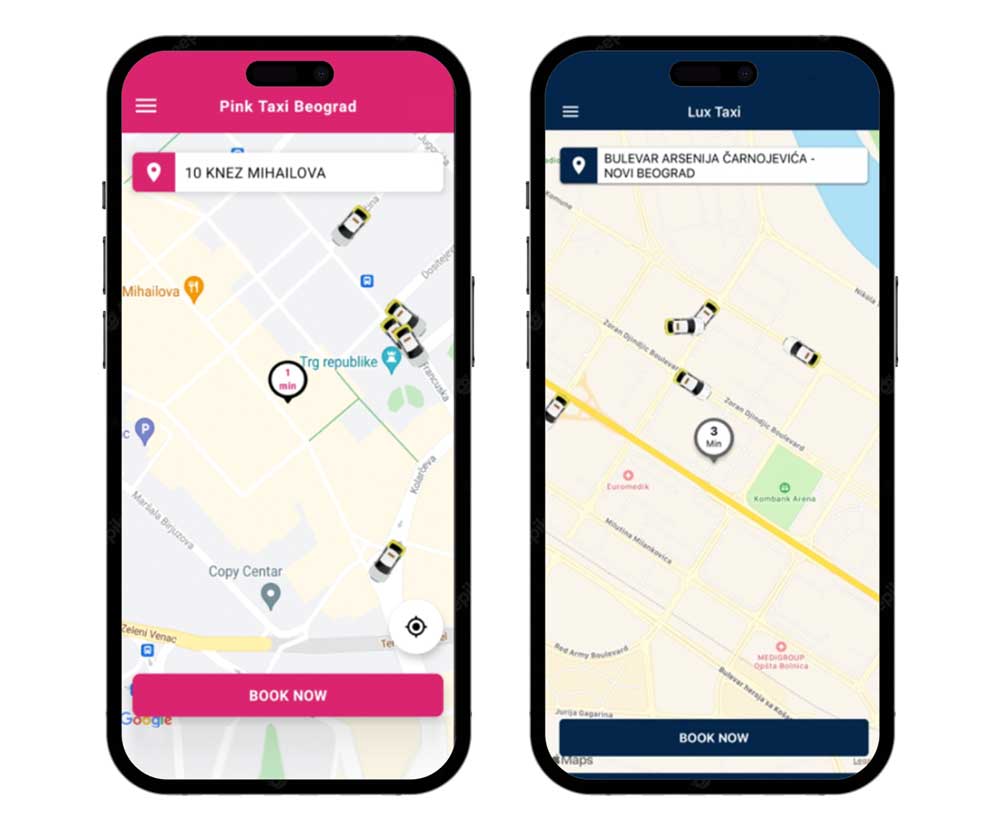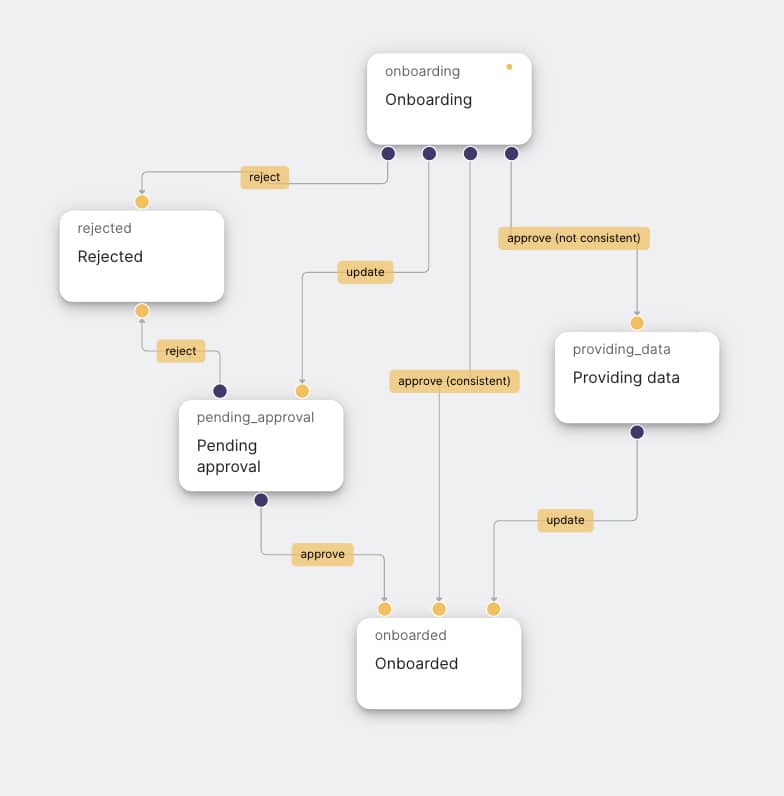What do B2B marketplaces, fish oil, beauty products, Volkswagen, and influencers have in common? White-labelling! Today, many people are still not familiar with the notion of “white-label”, even though white-label products are an old concept quite well used in the retail industry.
Basically, a white-label product is a standardized and well-rounded product without a brand a.k.a. label. Customers of white-label products put a label on them and brand them as their own products.
An example would be coffee beans, chips, beverages, natural supplements, and many more that you can buy in a supermarket. It’s not uncommon to find the same product with different labels (a.k.a. packaging) and prices next to each other on the same shelf.

White-labels are eating industries — even automotive
Although white-label products are widely used in the retail industry, it is not only for retail. Nowadays you can find white label products in almost any industry or sector.
With the rise of social media, the new wave of white-label products gained popularity mainly as beauty brands. Actors, singers, and similar celebrities have been rolling out their beauty brands since the end of the 20th century. Today, it is also common among social media influencers.
A very similar concept to white-label products is known in the automotive industry as badge engineering. Basically, it is the same car, but with a different badge a.k.a. label. Below you can find an example of Volkswagen Sharan & SEAT Alhambra.

You understand so far the essence: have different colors, copy, logo, and basically the same product. White-labels entered the software world as well.
Software adopted the concepts of white-labeling
Software that adopted a white-labeling approach is called a white-label solution. White-label solutions are enabling you to put a label a.k.a. badge a.k.a. packing on the user interface.
What exactly you can change on the user interface, depends on the white-label solution itself.
Typically, you can change the colors, font, font size, logo, and similar. This concept is also known as theming. In the context of web solutions, also as a website theme.
Below, you can see an example of two taxi companies from Serbia using a white-label solution to enable their taxi application. More advanced white-label solutions let you even change more on the user interface. For example, website layout.

White-label solutions can be great if functional requirements do not tend to change
White-label solutions do not let you add your own features, modify existing features, or extend them. In essence, they do not let you differentiate.
Neither do they let software developers change the solution. Some advanced solutions let you enable/disable a feature, but only if the vendor thought of that feature beforehand.
You can imagine white-label solution as a car. You have an instrument board that has a finite number of buttons. You have buttons for the radio, fan, recirculation, front windshield defrost, etc. But you also want a button for AC, sport mode, seating heating, etc. Well, you do not have them. It’s a bummer.
Some car manufacturers that thought of those features, will allow you to upgrade to it, others will not. Your close car mechanic friend (= software developer) might find a workaround on how to enable seat heating, but not other features. And that seat heating workaround works only if you are not driving faster than 70 km/h. If you drive faster, the engine stops.
It might sound that a white-label solution is bad, but that is not necessarily true. It depends on the requirements of what software should be used for. If the use case is very standardized, “simple”, and the software requirements are not expected to change, a white-label solution is a great solution.
Amazing piece of software that is white-label is Shopify. An online shop software that enables you to sell online in matter of minutes. You can set the theme, colors, upload your products and viola. Ready to go. You do no have to spend months and months developing online shop software, deploying it, maintaining it, dealing with technical scalability, and so many other things which cost time & money. And all of those things are not related to your business at all.
When your customers visit your online shop, they will not have a clue about Shopify because Shopify lets you choose your own “theme” — colors, fonts, font size, etc
One of the reasons that allows Shopify to be great is the nature of online shops. This use case if fairly “standardized”, “simple” and the functional requirements of online shops do not tend to change as the business grows.
If your requirements start changing (e.g. offering products that have 7 variants instead of only 4 like Shopify supports), the shop owner will most likely move away from Shopify, build the software solution from scratch, or use another more sophisticated online shop solution
Shopify amplifies the benefits of a white-label solution. You can start accepting your online orders within a day instead of spending months setting up the “basic and simple” online shop. It lets you focus on your core business instead of defocusing on building software, maintaining it, deploying it, scaling technical operations, etc. It lowers dramatically the cost of starting to sell online as well as the cost of maintaining and operating an online shop.
Please note that I have oversimplified the Shopify use case to make the point. In reality, Shopify is not white-label solution any more because it lets software developers change the core functionality.
White label solutions and marketplace businesses — a true mismatch
White-label solutions are quite limited, inflexible, not extensible, and rigid. That is not bad if they are used for the proper use case.
However, the nature of marketplace business is to change and evolve! The need for changes is very obvious during the two stages.
1) During the early stage when you are validating the marketplace business and need to change a lot based on the learnings from the market. For example, you learn that you forgot to collect VAT ID during participant onboarding or that you needpersonalized terms and conditions for bigger customers.
2) When introducing new marketplace sides. Think of AirBnB or Uber as examples. AirBnB opened up a new marketplace side called AirBnB experiences. Uber introduced UberEats. A B2B marketplace that built on randevu.tech, and also introduced a new side that they did not think of when starting.
As a marketplace business, you also change and modify in other stages, but during these two phases, it is more obvious.
B2B marketplaces are almost impossible to fit into white-label solution
For these reasons alone, white-label solutions are not your short-term or long-term companion. You are doomed to throw them away. Mostly immediately after the MVP if you were able to build the MVP at all which is especially challenging in the demanding B2B world.
To build the MVP, your marketplace idea has to fit into the white-label solution. If it doesn’t. Well, it’s a bummer. If your idea is slightly different from a standardized process, you cannot go with a white-label solution.
Think of B2B marketplaces. How can your idea fit into a white-label solution when a B2B marketplace in every industry is completely different? Is there a white-label solution that thought of all possible cases in every industry and prebuilt it for your idea? Very unlikely.
Realizing that, as software architects and software engineers, we started randevu.tech — headless & API-first marketplace software that brings the benefits of white-label solutions and at the same time — it is designed for being modified, changed, and extended. In the same manner as marketplaces do. In essence, randevu.tech is made to adopt to your requirements instead of your business fitting into randevu.
randevu.tech is by design made to be flexible and extensible
randevu.tech is not a white-label solution although it brings the benefits of a white-label solution. It lets you:
- focus on your marketplace business instead of tech
- it decreases your total cost of ownership by decreasing the size of your tech team
- It accelerates your time to market dramatically; depending on your marketplace complexity, you can go to market between a week and 3 months
- Lets you keep your data and IP in case you want to move away from it
randevu.tech is an API-first & headless product which basically means that the software is divided into two big buckets.
- Frontend that represents user interface such as website, mobile & tablet app, desktop application, etc. Fronted is also known as the Head.
- Backend that represents business logic and features and exposes them through APIs. This is also known as Headless.
Headless solutions gives you ultimate UX freedom
One of the many benefits of this approach is that you can completely change the UX on the frontend instead of just changing a theme as with white-label solutions.
randevu.tech is also a managed service offered as SaaS so it handles for you the software operations, scaling, maintenance, and deployments so that you can reduce your expenses through the reduction of directly-employed staff for specific roles to keep to handle them. You can repurpose your budget into what matters most – business development.
The most important thing is randevu’s flexibility achieved via our marketplace process engine that allows you to build features on your own and we can assist you if you need help. Here you can find an example of our engine applied to participant’s onboarding process.

For example, one B2B marketplace that runs on randevu.tech needed during onboarding to have its marketplace participant sign an NDA and terms & conditions. After being on the market, they learned that their industry does not tolerate standardised documents and their customers started popping up that demanded personalized NDA & terms. With randevu.tech, they required less than two days to roll out this into production with a customised handshake process.
Side-by-side architecture for extensions and customisations without headache
Moreover, randevu’s marketplace engine does not only let you build features on your own, but it also lets you extend it via so-called side-by-side extensions. Folks with experience in enterprise software went through the hell of the in-app extensions.
The in-app extension approach basically lets you modify directly the source code and later on deploy that new software artifact in production. This means that your organization has to understand the source code of the solution (think of expensive, trained and certified technical solution consultants). Also, your in-app extensions usually lead to compatibility issues when a new software version is released by the vendor. In the world of CMS, a lot of people are familiar with WordPress plug-ins that are in-app extensions. These extensions can create maintenance nightmare for organisations even for simple systems like CMS..
To solve these challenges, more robust solutions follow the side-by-side extension approach that allows you to customize the solution by creating a microservice and/or serverless function that runs side-by-side to the main system. The system and the custom extension communicate then via APIs and webhooks.
Event-driven architecture for better scalability, modularity, and real-time responsiveness
Last but not least, randevu.tech follows event-driven architecture. It means that everything that happens on a marketplace is captured as an event. For example, customer registered is an event. Customer confirmed their email, is another event. Customer moved through the onboarding, another event. Customer added an item to a shopping cart, that is another event. Customer removed an item from a shopping cart, that is another event. The event-driven approach is the foundation for the randevu’s marketplace engine lets you hook in whenever you want and extend the solution in the side-by approach.
An example is B2B marketplace that runs on randevu.tech. In their use case, the marketplace generates a PDF contract that contains the negotiation result between the marketplace participants. When the event “negotiation closed successfully” happens, randevu.tech calls the side-by-side extension that uses the API to generate the contract.
The benefit is that this customer did not need a certified randevu.tech solution consultant for this extension. Rather, a junior developer was able to do it. Also, when randevu.tech releases a new version, they do not have to fear that something will break.
White-label solution software can be great but not for B2B marketplace use-case
White-label products have long been utilized in the retail industry, allowing businesses to rebrand standardized products as their own. This concept has expanded to other sectors, like beauty brands, automotive badge engineering, and many more. In software, white-label solutions allows companies to customize the user interface a bit, but they lack the flexibility for adding new features or making significant changes. While suitable for simple and standardized cases, they fall short for marketplace businesses that require constant evolution and adaptability.
In contrast, randevu.tech offers a different approach. Not a white-label solution, it provides the benefits of one while allowing extensive customization and flexibility. As an API-first and headless product, it separates the backend from the frontend, empowering businesses to build UX and modify features according to their needs – if they want to stand out and create their own.
With side-by-side extensions and event-driven architecture, randevu.tech enables businesses to extend the solution without compatibility issues, making it a valuable choice for marketplace ventures seeking agility and growth.
So next time when you think of building a unique marketplace business, consider the limitations of white-label solutions and think about what technology suits you best. And of course, reach out – I am happy to share our experience of building marketplaces and we will be happy to let you try out randevu.tech
Please feel free to reach out via email or LinkedIn or talk to our sales team.
